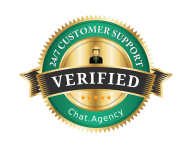Getting feedback from clients is a game-changer for any business. It helps you understand what your customers really want, boosts their loyalty, and keeps you ahead of your competitors. By listening to your clients, you can improve your products and services, making sure you’re always meeting their needs.
Table of Contents
ToggleKey Takeaways
- Client feedback is crucial for understanding and meeting customer needs.
- Using feedback can help improve your products and services.
- Listening to clients can build stronger customer loyalty.
- Feedback helps you stay ahead of competitors by identifying market trends.
- There are various methods to collect feedback, like surveys, social media, and direct interviews.
Understanding the Value of Client Feedback
Why Client Feedback Matters
Client feedback is essential for any business aiming to improve its products or services. It provides a goldmine of valuable insights that help you understand your clients’ pain points, preferences, and expectations. By listening to your clients, you can develop solutions that better meet their needs, making them feel valued and understood.
The Role of Feedback in Business Growth
Feedback is a powerful tool for business growth. It helps you identify areas for improvement and innovate faster than your competitors. When you act on client feedback, you can quickly adapt to changing market dynamics and stay ahead of the curve. This proactive approach not only enhances your offerings but also fosters long-term success.
Common Misconceptions About Client Feedback
Many businesses mistakenly believe that they know best and don’t need client input. However, this old-school thinking can hinder growth. Ignoring client feedback means missing out on opportunities to fine-tune your products or services. By prioritizing client feedback, you can build stronger relationships and improve overall client satisfaction.
Methods for Collecting Client Feedback

Collecting client feedback is essential for understanding their needs and improving your business. Here are some effective methods to gather valuable insights from your clients.
Surveys and Questionnaires
Surveys and questionnaires are popular tools for collecting feedback. They can be distributed via email, in-store kiosks, or even on receipts. Email surveys are great for quick check-ins after a purchase, while in-store kiosks can capture immediate reactions about the shopping experience. Adding a survey link to a receipt or using comment cards can also be effective.
Social Media and Online Reviews
Social media platforms and online review sites are treasure troves of client feedback. Monitoring these channels allows you to see what clients are saying about your business in real-time. Engaging with clients on social media can also encourage more honest and spontaneous feedback.
Direct Client Interviews
Direct client interviews provide in-depth insights that surveys might miss. These can be conducted in person, over the phone, or via video calls. This method allows for a more personal touch and can help build stronger client relationships.
Gathering feedback through various methods ensures you capture a comprehensive view of client opinions, helping you make informed decisions to enhance your business strategy.
Incorporating Client Feedback into Your Business Strategy
Analyzing Feedback Data
To make the most of client feedback, start by analyzing the data you collect. This involves categorizing feedback into themes and identifying common issues. Understanding these patterns helps you prioritize what needs immediate attention. Use tools like spreadsheets or specialized software to organize and visualize the data.
Implementing Changes Based on Feedback
Once you’ve analyzed the feedback, the next step is to implement changes. Work closely with your product team to find easy ways to incorporate feedback that might be a low-hanging fruit. For more complex changes, consider running a pilot program to test their effectiveness. This approach ensures that you are making informed decisions that will benefit your clients.
Measuring the Impact of Feedback-Driven Changes
After implementing changes, it’s crucial to measure their impact. Track key performance indicators (KPIs) to see if the changes are making a positive difference. This could include metrics like customer satisfaction scores, retention rates, and sales figures. By continuously monitoring these KPIs, you can adjust your strategies in real-time, thereby staying ahead of the competition.
Incorporating client feedback is not just about making changes; it’s about creating a continuous improvement loop that keeps your business aligned with client needs.
Building Stronger Client Relationships Through Feedback
Personalizing Client Interactions
Client feedback is a treasure trove of insights that can help you tailor your interactions. By understanding their preferences and pain points, you can offer more personalized solutions. This not only makes clients feel valued but also enhances their overall experience. Personalized interactions can lead to higher satisfaction and loyalty.
Enhancing Client Loyalty
When clients see that their feedback leads to real changes, they are more likely to stay loyal to your brand. Implementing suggestions shows that you value their opinions and are committed to meeting their needs. This can turn satisfied clients into loyal advocates for your business.
Creating a Feedback Loop
A continuous feedback loop ensures that you are always in tune with your clients’ needs. Regularly asking for and acting on feedback helps you stay ahead of issues and adapt quickly. This ongoing process is crucial for maintaining strong client relationships and fostering long-term loyalty.
Building a strong relationship with your clients through feedback is not just about listening; it’s about taking action and showing that you care about their success.
Overcoming Challenges in Gathering Client Feedback

Dealing with Negative Feedback
Handling negative feedback can be tough, but it’s crucial for growth. Negative feedback offers a chance to improve. Instead of seeing it as a setback, view it as a way to make your business better. Responding quickly and effectively can turn a bad experience into a positive one.
Encouraging Honest Responses
Getting clients to be honest can be tricky. People might hold back their true thoughts to avoid conflict. To get genuine feedback, make sure clients feel safe sharing their opinions. Anonymity can help, as well as reassuring them that their feedback will be used to improve services.
Maintaining Consistent Feedback Channels
Keeping feedback channels open and consistent is key. If clients know they can always share their thoughts, they’re more likely to do so. Use multiple methods like surveys, social media, and direct interviews to gather a wide range of feedback. This ensures you get a complete picture of client satisfaction.
Consistent feedback helps you stay in tune with your clients’ needs and expectations, allowing you to adjust your business strategies accordingly.
Leveraging Feedback to Outpace Competitors
Identifying Market Trends
Customer feedback is a treasure trove of insights that can help you spot emerging market trends. By listening to what your clients are saying, you can identify shifts in consumer preferences and adapt accordingly. Staying ahead of these trends allows you to offer products or services that meet current demands, giving you a competitive edge.
Adapting to Client Needs Quickly
The faster you can incorporate customer feedback into your offerings, the quicker you can meet your clients’ evolving needs. This agility not only helps in retaining existing customers but also attracts new ones. Fast innovation cycles are vital to keeping up with rapidly changing market dynamics, and being able to quickly adapt and iterate is crucial.
Innovating Based on Client Insights
Customer feedback can be a catalyst for innovation. By understanding your clients’ pain points and preferences, you can develop new products or services that address these issues. This not only helps in solving your clients’ problems but also positions your business as a leader in the industry. Innovation driven by client insights can set you apart from competitors and drive long-term success.
Tools and Technologies for Effective Feedback Collection
Customer Feedback Software
Customer feedback software is essential for gathering and analyzing client opinions. These tools help you collect data through various channels like surveys, emails, and pop-ups. Equipping support teams with the right tools enhances service quality and customer satisfaction. Some popular options include SurveyMonkey, Qualtrics, and Typeform. These platforms offer customizable templates and advanced analytics to help you understand your clients better.
Utilizing CRM Systems
Customer Relationship Management (CRM) systems are invaluable for managing client interactions and feedback. By integrating feedback collection into your CRM, you can maintain a comprehensive view of each client’s history and preferences. This integration allows for more personalized interactions and helps in identifying trends and areas for improvement.
Integrating Feedback Tools with Business Processes
Integrating feedback tools with your existing business processes ensures that the insights you gather are actionable. This can be done by linking feedback software with project management tools, CRM systems, and communication platforms. A multi-channel support strategy, including live chat and self-service options, caters to diverse customer preferences. This seamless integration helps in quickly addressing client concerns and implementing necessary changes.
Collecting feedback effectively is crucial for any business aiming to improve. Using the right tools and technologies can make this process seamless and efficient. From live chat solutions to automated surveys, there are many options available to gather valuable insights from your customers. Want to learn more about how these tools can benefit your business? Visit our website today!






